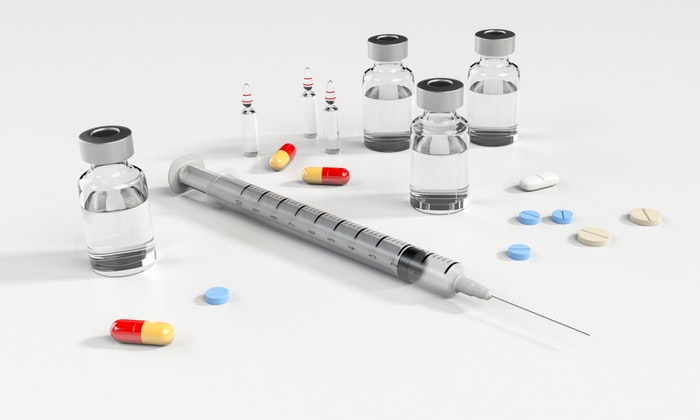
The issue of health care costs in the United States seems to be a never-ending debate. According to the OECD, the healthcare sector is one of the largest and most complex in the U.S. economy.
The United States is spending about $3.5 trillion a year on health care expenses, an increase of 12,300% since 1960. In that timeframe, health care spending increased from 5% of U.S. GDP to about 17.5% of GDP. To offer just an example, in 2000, U.S. hospital care expenditure came to 415.5 billion U.S. dollars. Until 2010, this figure increased to around 822 billion U.S. dollars.
Then again, medicinal services in the U.S. costs about twice as much as it does in some other created nation.
Moreover, even if health care in the U.S. is based on advanced technology and people find here some of the highest-quality care in the world, the overall health results in the U.S. are subpar. For instance, life expectancy decreased to 78.6 years, according to the CDC, below the average of other developed countries, whereas few to nothing changed in terms of infant mortality or the major causes of death on the overall population.
As per the economist and Harvard Medical School relate teacher of healthcare policy and Massachusetts General Hospital physician Anupam Jena, even though the U.S. currently spends more per capita on healthcare than other rich countries, the life expectancy of the American public is the same or worse.
While the public does not need to find out that health care costs tremendously, because people already know this, the problem is to understand why. Today, we will try to understand the problem of health care costs and what stands behind them.
Furthermore, to find the underlying cause of the problem, we will focus on U.S. hospitals, because over 30% of Americans’ total healthcare expenditures and around 40% of Americans’ personal health care expenditures go to hospitals. Hospital center uses incorporate cash spent toward inpatient mind and additionally any outpatient benefit gave the clinic.
1. Administrative Costs
According to Harvard economist David Cutler, one of the major costs related to health care in the U.S. is administrative costs. For example, these costs include paying billing clerks needed to determine how to bill to meet the varying requirements of multiple insurers.
Other countries in Europe or Canada, which have a single-payer system, do not require this level of staffing to administer healthcare. Moreover,data from 2012 shows that around 50% of hospital expenses consist of salary expenses. As the figures show, labor costs are the largest expenses for hospitals. Since 2015, wages and benefits for caregivers and support staff accounted for around 60% of total spending on hospital care.
When it comes to salaries breakup, as the figure above shows, around 30% of total hospital salaries go to non-clinical staff, such as surgical tech and the billing staff we mentioned above, among others.
2. The Drug Costs
If in 2012 the supply costs made 17% of total hospital costs, in recent years these expenses have increased tremendously. Hospital supplies include food and food service supplies, drugs, and other patient care equipment. Among them, medicine and drugs make one of the hottest debates American hospitals, patients, and policymakers have to deal with.
According to a recent survey, inpatient drug expenses increased an average of 23.4% per year between fiscal years 2013 and 2015. Moreover, according to even more recent reports, drug prices continue to rise, determining many U.S. hospitals to implement aggressive strategies to reduce pharmaceutical spending.
A new analysis from the Moran Company found that a hospital is paid 2 ½ times what the pharma company, who brought the medicine to market, receives. This is a threat to affordability, the analysis states, driving higher cost sharing and premiums for patients across the country.
Insurers pay for medicines administered in hospital outpatient settings differently than when the patients purchase them at a pharmacy. In the hospital setting, the hospital purchases the medicine directly from the pharma company and is then reimbursed by the patient’s insurer, often with a steep price increase.
The difference between how much hospitals can charge for a medicine and how much they get back from the insurer depends greatly on local hospital and insurer market dynamics.
One of the most important conclusions coming from the Moran report is that hospital profit margins lead to higher costs for patients, employers and payers. However, these markups are often overlooked in analyses regarding medicine costs.
As the provider market continues to become more concentrated and the number of medicines administered in hospitals is growing, the amount with which hospitals increase medicine prices needs deeper scrutiny.
3. Expensive Technologies and Mixes of Treatments
In comparison to other developed countries, the U.S. uses highly advanced technology – which is expensive – very often. Moreover, the hospital trend in the U.S. is to use specialists, whose fees are higher than primary care doctors are, when the same types of treatments are performed at the primary-care level in other countries.
Specialists receive higher salaries, which drives the costs up in the U.S. for everyone. Nevertheless, even if the U.S. uses hi-tech devices like MRIs and pays highly trained doctors, the results are still poor in comparison to other countries, a fact that begs the question: why do Americans receive better care but have poorer health?
4. Defensive Medicine
Other data shows that U.S. hospitals use more tests than others do – in industrialized countries – to diagnose an illness, even if the doctors know exactly what illness they deal with. The extra use of tests and diagnosis methods stems from the fact that doctors are sued often and are afraid of litigation (despite their malpractice insurance), thus engaging in what experts call defensive medicine.
A Gallup survey estimated that $650 billion spent annually could be attributed to defensive medicine. It is not surprising to learn that defensive medicine raises the cost of healthcare for patients. The bonuses for increasing patient care revenues also add to the reasons for practicing defensive medicine.
According to the NCIB, hospital patients with private insurance stay in hospitals longer and receive many procedures compared to patients with Medicaid coverage or patients who lack health insurance.
5. Health Insurance and Politics
An American patient rarely knows what health care costs are and how to calculate them. The term “cost insulation” comes up often in conversations, meaning that the average person does not know very well how much health insurance premium costs.
The average insured American also does not know in detail how much their employer is actually contributing to the premiums. This “widespread ignorance of how expensive healthcare actually is” is more prevalent among people with private insurance through their employers.
As history proved in the past decade, hospitals are becoming a consolidated market, which allows them to charge more and even go aggressively after the patients to get their money.
Another interesting fact that few policymakers talk about is that specialists need complex mathematical formulas in order to calculate how much a patient costs in a hospital setting. The billing staff previously mentioned has to engage in complex data processing to determine the cost of a patient.
From this point of view, the push-and-pull politics on the Affordable Care Act and health care policies in general does not help the health care system in the U.S. to work better or more efficient. The main idea of the Patient Protection and Affordable Care Act was to transform the health sector by increasing the quality of health insurance, lowering the costs, and expanding the coverage of the insured people.
Met with criticism on one hand, and enthusiasm on the other, the ACA is one of the major topics on examination in the Capitol. Moreover, these days we assist in debates on the new version of the ACA proposed in the U.S. Senate, one more related to a return to free-market principles, and probably even higher prices.
Conclusion
Due to its particular functioning, the future of the healthcare system in the U.S. seems uncertain, especially because prices continue to grow, while the quality of the medical act seems to be the same or, worse, to decrease.


